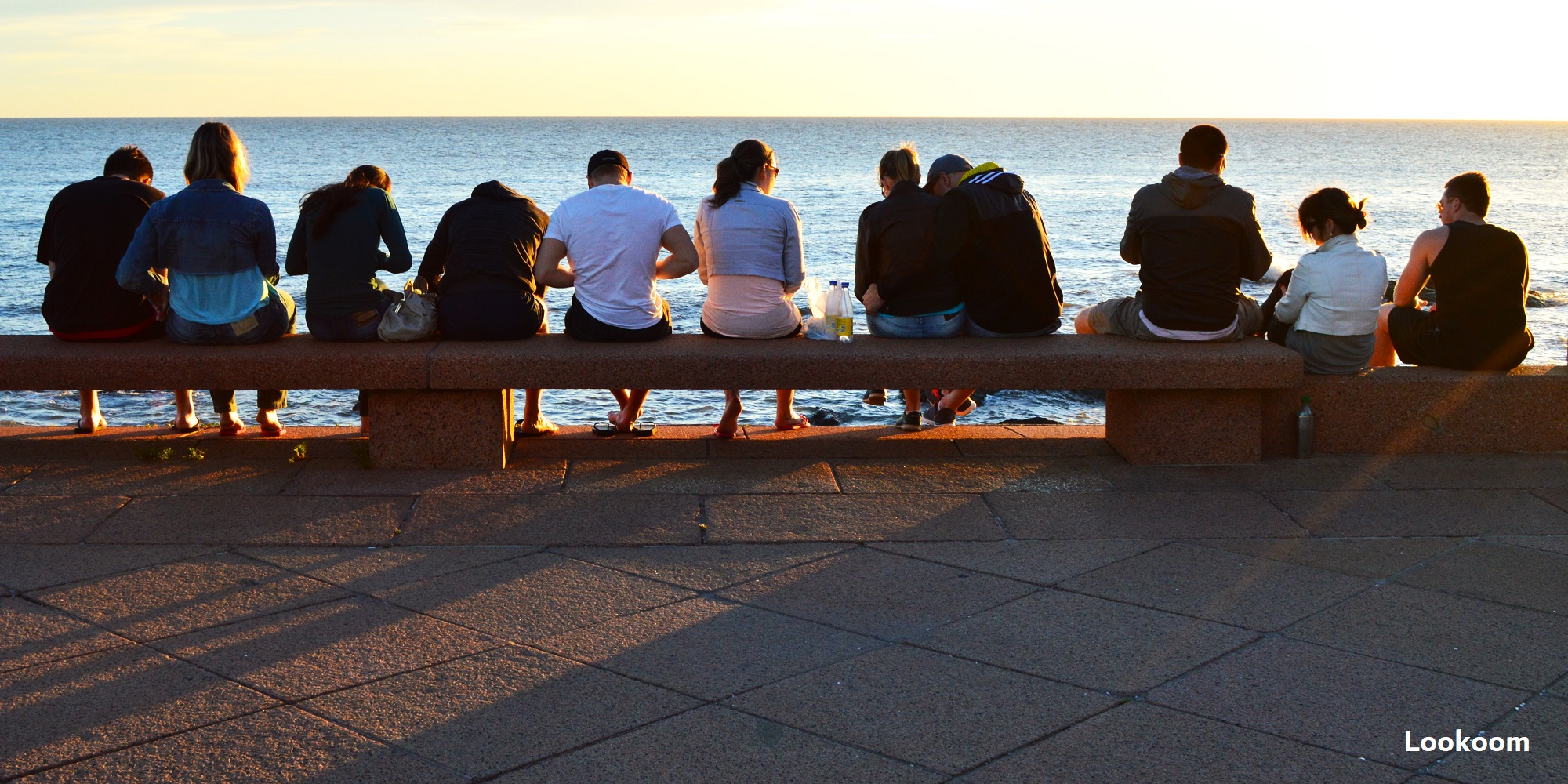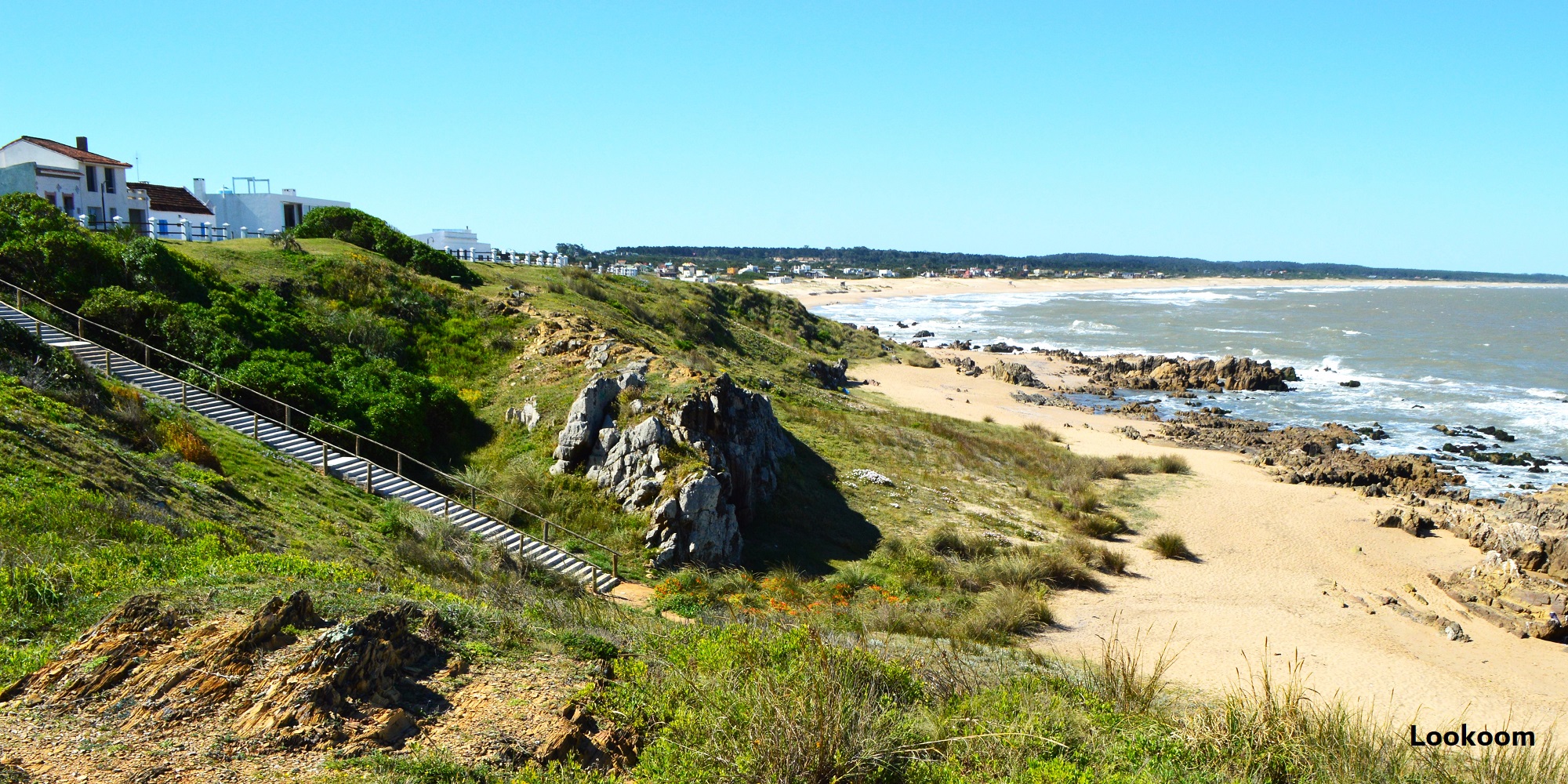(continuer en français) – Last updated: June 29, 2023
Colonia is the oldest city in Uruguay, its fortified port was created by the Portuguese in 1680 to compete with the Buenos Aires of the Spaniards established a century earlier on the other bank of the Rio de la Plata. Later Colonia changed hands several times, with the Spanish and Portuguese successively regaining the control in the numerous confrontations between the two nations. Colonia was for a long time on the border between the two colonial empires, until the founding of Uruguay.
A map of the mouth of the Rio de la Plata is shown on a wall, showing Buenos Aires and Colonia deliberately facing each other. Strangely enough, this map was drawn up by a French naval engineer.
The old fortifications have been dismantled, only a small section remains. The former main gate, Portón de Campo, has been reconstituted in modern times with a fake drawbridge, although this gives an idea of the military character of the place.
The barrio historico is now only a small part of the city; the modern districts have developed all around it, leaving visitors the exclusivity of the cobbled streets with old, typical houses, sometimes a bit derelict. It is this historic district that has been on the UNESCO World Heritage List since 1995.
The city’s cathedral, Iglesia Matriz, has been rebuilt several times, after the many destructive disputes between the Portuguese and Spanish. The present aspect of the cathedral dates mainly from 1860, with a surprisingly sober interior decoration.
Tourism being the prevailing activity in the area, apart from restaurants, souvenir shops and a few hotels, there is not much local life. Visitors are on their own, sharing a calm and relaxed atmosphere, where everyone quietly enjoys the moment.
In order to catch the attention of tourists, a common commercial trick in Uruguay is to park old cars in front of shops.
Colonia is undoubtedly the city in Uruguay that has best preserved the architectural heritage of the colonial times. The old cobbled streets are lined with traditional houses, climbing plants decorate the façades, while palm trees and sycamores provide shade in the streets.
Calle de los Suspiros, the Street of Sighs, is the most typical street, it has kept its modest old dwellings, some of them have been converted into craftsmen’s workshops.
Whenever the opportunity arises, a few plants come to embellish somewhat rough exterior facades, the intention to please is obvious.
Also noteworthy is the judicious choice of the lamp posts, inspired by the style of the lanterns of yesteryear, they bring an ancient touch in harmony with the place.
A lighthouse was built in 1857 from the ruins of the San Francisco convent dating from the 17th century.
Colonia is 50 km from Buenos Aires, fast ferries take about an hour to cover the distance. The historic district is close to the landing pier, so it is possible to walk from there. As the visit can be done in half a day, it is possible to make the round trip within a day and consider Colonia as a day trip as part of a multi-day stay in the Argentinean capital.
Many visitors get organised in this way and contribute to making Colonia a very busy place in itself, regardless of the attractiveness of Uruguay. The former colonial city is for many people the only place they would visit in the country, quite a pity as there is really more to see.
To be informed of upcoming articles, register here (it’s free!).
Articles about Uruguay:
…
Montevideo: Top 10
The capital of a small country caught between two giants, Montevideo must assert its identity if it is not to be considered a borough of Buenos Aires. Founded in 1724, the city was fought over by the Spanish and Portuguese, with the English also occupying the city in 1807. A turbulent past that led to a more open-mindedness in Uruguay than in its neighbours.
Colonia, the colonial city
Colonia is the oldest city in Uruguay, its fortified port was created by the Portuguese in 1680 to compete with the Buenos Aires of the Spaniards established a century earlier on the other bank of the Rio de la Plata. Later Colonia changed hands several times, with the Spanish and Portuguese successively regaining the control in the numerous confrontations between the two nations. Colonia was for a long time on the border between the two colonial empires, until the founding of Uruguay.
Punta del Este
It is first and foremost a seaside resort. At the height of the summer season there are people everywhere and parking spaces are hard to find. From the mid-season on, however, the buildings seem oversized for the few people found in the streets. In winter, it soon looks like a ghost town. The city officially has around 10,000 inhabitants, but it is the temporary residents and the fluctuation in their numbers according to the seasons that decide the pace of the city.
Punta del Diablo
Arriving from Punta del Este and its luxury buildings, Punta del Diablo offers a completely different appearance, a little disconcerting. At first glance it looks like a mixture of a fishing port and a half-abandoned squat. The boats are pulled onto the beach, surrounded by houses to which the local term cabanas seems more appropriate.
Santa Teresa Fortress
The construction of the fortress began with the Portuguese in 1762 and was later completed by the Spanish after 1793. For a long time, the region now occupied by Uruguay was mainly the battleground of Spain and Portugal, at the meeting point of their respective South American empires. The military facilities were therefore numerous, changing hands according to the battles or treaties signed in Europe.
Montevideo, La Rambla
Like a large balcony overlooking the sea, La Rambla in Montevideo is a meeting place. In the evenings and at weekends, friends and friends of friends meet here.


Coastal road trip
Leaving Montevideo via La Rambla, there are 320 kilometres, 200 miles, on Route 9 to reach the border with Brazil in the north.
To be informed of upcoming articles, register here (it’s free!).








































The colonial architecture is beautiful. I spent time in El Salvador but not much of the colonial architecture survived the series of earthquakes and the civil war there. Uruguay is not a country we hear much about in the US.
LikeLiked by 1 person
Uruguay is a rather quiet country, tourism is mainly focused on the two big neighbours Argentina and Brazil. In my opinion the best example of Spanish colonial architecture is in Cartagena, Colombia, the old quarter of Panama City, Casco Viejo, trying to follow in its footsteps. I checked out your photos from El Salvador, too bad there aren’t more of them. Thanks for commenting.
LikeLiked by 1 person
So colourful. Thanks for sharing. Allan
LikeLiked by 1 person
The lines, the colours, there is an attractive charm in the old colonial towns. Thanks for reading.
LikeLiked by 1 person
Looks beautiful and love all the colour. Uruguay is one of those countries you don’t read much about. We were so close in Buenos Aires; I wish we had visited.
LikeLike
You are right. To wonder if it is voluntary on their part. In terms of tourism, I attribute it to the fact that they seem to focus on Brazilians and Argentinians.
LikeLiked by 1 person
I love see the old buildings and architecture. Things built today just don’t seem as interesting.
LikeLiked by 1 person
When I visit old buildings that have been somewhat weathered by time, I always think that they mark me more because my imagination is involuntarily working on reconstructing the past.
LikeLike
The architecture looks beautiful with all the different styles and colours. Looks like you had lovely weather when you visited with those blue skies. Makes for the perfect background for your pictures.
LikeLiked by 1 person
I had my share of overcast skies, but near the sea it usually changes faster. In this case the sunlight does help to bring out the colours. Thanks for reading and commenting.
LikeLiked by 1 person
ive heard its a really attractive and interesting place – thanks for sharing!
LikeLiked by 1 person
It really is. It’s also interesting to see how tourism can shape the fate of a city or a neighbourhood. Colonia has a role as a historical façade in Uruguay, strategically located in front of Buenos Aires.
LikeLike
Colonia is really a town like no other I have seen during my travels. The feeling of its historical importance cannot be missed 🙂
LikeLiked by 1 person
I agree with you, Colonia is a homogenous setting that allows to imagine what a Spanish colonial city could have been like. I found the same context in the Casco Viejo in Panama City or in the old town of Cartagena in Colombia.
LikeLiked by 1 person
Sounds like we have more areas of South America to explore, thank you for the inspiration 🙂
LikeLiked by 1 person
if I may make a suggestion, I would recommend Cartagena. Certainly there may be too many tourists, the street vendors are like flies, but the old architecture is well preserved.
LikeLiked by 1 person
Thank you, are there spots where street vendors are not like flies? Well, maybe here in Stockholm where we barely have any 😀
Let’s hope that the world will be open for traveling soon 🙂
LikeLiked by 1 person
We don’t have too many street vendors in Toronto either. Your hope to travel soon seems reasonable and I want to share it.
LikeLiked by 1 person